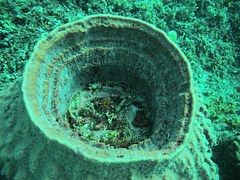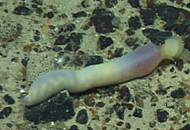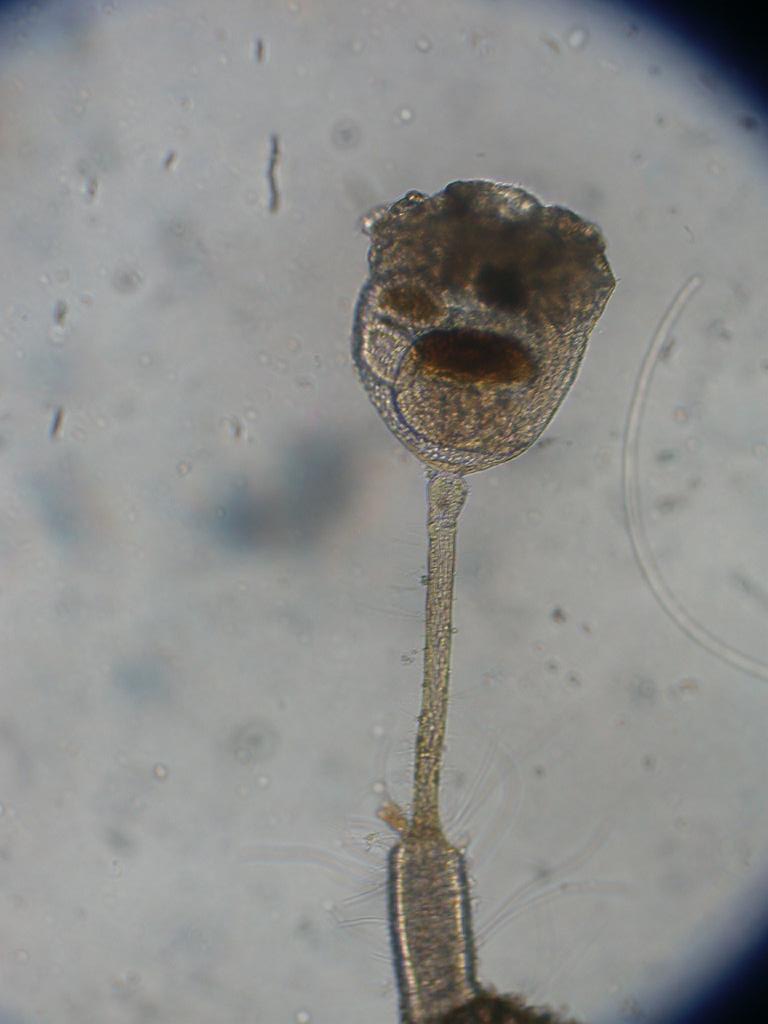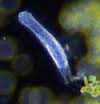Kingdom Animalia – Phylum (Phyla = plural): (within the animal kingdom there are some 36 phyla but of these phyla there are nine that are most commonly used. These nine are listed first)
What are Phyla or Phylum?
Phyla – the plural of phylum- is the name for a hierarchical grouping in taxonomy. All living organisms can be placed into groups based on their evolutionary path (or physical characteristics as it was before our understanding of evolution). Each organism belongs to a kingdom – animal, plant, bacterium or fungus – and these organisms can then be grouped into sub-groups. The process can be continued until you find the species of the organism.
The Phyla of an organism is the subgroup of organisms from the animal kingdom (Kingdom Animalia).
The Most Common Phyla
Phylum Annelida
 Annelida (commonly known as segmented or ringed worms contains 3 classes (class Polychaeta, class Hirudinea and class Clitellata (also known as class Oligochaeta) This Phylum has two main morphological features. One feature is their segments or metamerism each with separate respiratory, excretory and locomotary organs that are repeated in each segment. The number of segments increases with age; the youngest of which are found at the posterior of the animal. The second common features are the ‘chaetae’ which are little bristles that can be found on each segment and may be thin tubular structures or hooks);
Annelida (commonly known as segmented or ringed worms contains 3 classes (class Polychaeta, class Hirudinea and class Clitellata (also known as class Oligochaeta) This Phylum has two main morphological features. One feature is their segments or metamerism each with separate respiratory, excretory and locomotary organs that are repeated in each segment. The number of segments increases with age; the youngest of which are found at the posterior of the animal. The second common features are the ‘chaetae’ which are little bristles that can be found on each segment and may be thin tubular structures or hooks);
Phylum Arthropoda or Arthropods
 Arthropoda or Arthropods (contains 15 classes (Class Arachnida, Class Branchiopoda, Class Cephalocarida, Class Chilopoda, Class Diplopoda, Class Entognatha, Class Insecta, Class Maxillopoda, Class Ostracoda, Class Pauropoda, Class Pycnogonida, Class Remipedia, Class Symphyla and Class Xiphosura) This taxa contains invertebrates with exoskeletons (skeletons on the outside) and jointed legs and get their name from the greek words ‘arthron’ meaning joint and ‘podos’ meaning foot.
Arthropoda or Arthropods (contains 15 classes (Class Arachnida, Class Branchiopoda, Class Cephalocarida, Class Chilopoda, Class Diplopoda, Class Entognatha, Class Insecta, Class Maxillopoda, Class Ostracoda, Class Pauropoda, Class Pycnogonida, Class Remipedia, Class Symphyla and Class Xiphosura) This taxa contains invertebrates with exoskeletons (skeletons on the outside) and jointed legs and get their name from the greek words ‘arthron’ meaning joint and ‘podos’ meaning foot.
Phylum Chordata
 Chordata (contains 15 classes (class Actinopterygii, class Amphibia, class Appendicurlaria, class Ascidiacea, class Aves, class Elasmobranchii, class Holocephali, class Leptocardii, class Mammalia, class Myxini, class Petromyzontida, class Reptilia, class Sarcopterygii, class Sorberacea and class Thaliacea). Phylum Chordata contains more than 75,000 living species and arguably contains the most successful animals on Earth. This includes three groups of animals called Tunicates, Lancelets and vertebrates (animals with backbones) but all chordatas have something called a notochord. A notochord is a semi-flexible rod that works as a support for the animal’s basic structure (which in vertebrates develops into the backbone in the latter part of it’s embryonic development). Chordata include some of the most familiar classes of animals including birds, fish, reptiles, amphibians and mammals).
Chordata (contains 15 classes (class Actinopterygii, class Amphibia, class Appendicurlaria, class Ascidiacea, class Aves, class Elasmobranchii, class Holocephali, class Leptocardii, class Mammalia, class Myxini, class Petromyzontida, class Reptilia, class Sarcopterygii, class Sorberacea and class Thaliacea). Phylum Chordata contains more than 75,000 living species and arguably contains the most successful animals on Earth. This includes three groups of animals called Tunicates, Lancelets and vertebrates (animals with backbones) but all chordatas have something called a notochord. A notochord is a semi-flexible rod that works as a support for the animal’s basic structure (which in vertebrates develops into the backbone in the latter part of it’s embryonic development). Chordata include some of the most familiar classes of animals including birds, fish, reptiles, amphibians and mammals).
Phylum Cnidaria
 Cnidaria (contains 8 Classes (class Anthozoa, class Cubozoa, class Hydrozoa, class Malacosporea, class Myxosporea, class Scyphozoa, class Staurozoa and class Polypodiozoa) from the Greek word ‘Cnido’ meaning stinging nettle). This Phylum is designated to organisms that contain stinging cells called nematocysts such as corals, jelly fish and other aquatic stinging organisms);
Cnidaria (contains 8 Classes (class Anthozoa, class Cubozoa, class Hydrozoa, class Malacosporea, class Myxosporea, class Scyphozoa, class Staurozoa and class Polypodiozoa) from the Greek word ‘Cnido’ meaning stinging nettle). This Phylum is designated to organisms that contain stinging cells called nematocysts such as corals, jelly fish and other aquatic stinging organisms);
Phylum Echinoderms
 Echinoderms (contains 5 classes (class Asteroidea, class Crinoidea, class Echinoidea, class Holothuroidea and class Ophiuroidea). From the Latin meaning ‘spinny-skin’ (although most echinoderms do have spiny skin some do not) All echinoderms are marine animals meaning they are not found on land or in fresh water. This phylum includes sea urchins, starfish, brittle stars and sea cucumbers among others);
Echinoderms (contains 5 classes (class Asteroidea, class Crinoidea, class Echinoidea, class Holothuroidea and class Ophiuroidea). From the Latin meaning ‘spinny-skin’ (although most echinoderms do have spiny skin some do not) All echinoderms are marine animals meaning they are not found on land or in fresh water. This phylum includes sea urchins, starfish, brittle stars and sea cucumbers among others);
Phylum Mollusca
 Mollusca (coniains 8 classes (class Bivalvia, class caudofoveata, class cephalopoda, class Gastropoda, class monoplacophora, class polyplacophora, class Scaphopoda and class Solenogastres). One major characteristic of Mollusks is their soft bodies and their name comes from the Greek word ‘mollus’ meaning soft. Usually this soft body has some kind of protective shell made of calcium but some molluscs have lost this shell through evolution (such as octopi) or this protective shell has become internal as with squid. Mollusks have a fluid filled cavity called a ‘Coelom’ which suspends the internal organs and acts as a ‘hydrostatic skeleton’. This allows molluscs to change shape for use as transportation and allows octopi to fit in very tight crevasses’. Mullusca include sea snails, snails, octopuses, squid, clams, scallops, oysters, and chitons);
Mollusca (coniains 8 classes (class Bivalvia, class caudofoveata, class cephalopoda, class Gastropoda, class monoplacophora, class polyplacophora, class Scaphopoda and class Solenogastres). One major characteristic of Mollusks is their soft bodies and their name comes from the Greek word ‘mollus’ meaning soft. Usually this soft body has some kind of protective shell made of calcium but some molluscs have lost this shell through evolution (such as octopi) or this protective shell has become internal as with squid. Mollusks have a fluid filled cavity called a ‘Coelom’ which suspends the internal organs and acts as a ‘hydrostatic skeleton’. This allows molluscs to change shape for use as transportation and allows octopi to fit in very tight crevasses’. Mullusca include sea snails, snails, octopuses, squid, clams, scallops, oysters, and chitons);
Phylum Nematoda

Phylum Platyhelminthes
 Platyhelminthes (contains 4 classes (class Cestoda, class Monogenea, class Trematoda, class Turbellaria) they get their name from the Greek words ‘Platy’ meaning flat and ‘helminth’ meaning worm. This Phylum is designated for the flatworms. They have no circulatory or respiratory organs, but their flat shape helps them obtain the nutrients and oxygen required through diffusion);
Platyhelminthes (contains 4 classes (class Cestoda, class Monogenea, class Trematoda, class Turbellaria) they get their name from the Greek words ‘Platy’ meaning flat and ‘helminth’ meaning worm. This Phylum is designated for the flatworms. They have no circulatory or respiratory organs, but their flat shape helps them obtain the nutrients and oxygen required through diffusion);
Phylum Porifera
 Porifera (contains 3 classes (class Calcarea, class Demospongiae and class Hexactinellida). The name comes from the Greek word meaning ‘pore bearer’. This group has minute pores throughout its body allowing water to flow through. They have no circulatory or digestive system and so rely on the current the water to pass food and oxygen through its cells. Sponges are members of the Porifera Phylum);
Porifera (contains 3 classes (class Calcarea, class Demospongiae and class Hexactinellida). The name comes from the Greek word meaning ‘pore bearer’. This group has minute pores throughout its body allowing water to flow through. They have no circulatory or digestive system and so rely on the current the water to pass food and oxygen through its cells. Sponges are members of the Porifera Phylum);
Less Common Phyla
The following are some of the less common Phyla of the animal kingdom.
Phylum Acanthocephala

Phylum Acoelomorpha

Acoelomorpha (contains 2 classes (class Acoela and class Nemertodermatida) – a disputed phylum designated for soft bodied marine animals that were traditionally thought to be part of the platyhelminthes phyla. Further study placed these animals in a separate phylum altogether (Baguñà & Riutort 2004));
Phylum Brachiopoda
 Brachiopoda (contains 3 classes (class Craniforma, class Lingulata and class Rhynchonellata) Brachiopods are a group of marine organisms that have a hard shell (also called a valve) that in cases the animal from above and below. They are filter feeders that use cilier (hair like organelles) that collect the food as the water filters through. Examples of Brachiopods are lamp shells);
Brachiopoda (contains 3 classes (class Craniforma, class Lingulata and class Rhynchonellata) Brachiopods are a group of marine organisms that have a hard shell (also called a valve) that in cases the animal from above and below. They are filter feeders that use cilier (hair like organelles) that collect the food as the water filters through. Examples of Brachiopods are lamp shells);
 Bryozoa (contains 3 classes (class Gymnolaemata, class Phylactolaemata and class Stenolaemata). There are about 5000 living species of Bryozoans, more commonly known as moss animals, with many more fossil species found. Individual bryozoans are normally less than a millimetre in length but are found in colonies of many thousands of interconnected individuals. These interconnected colonies resemble coral-like structures and are found in marine rocks or the underside of ships);
Bryozoa (contains 3 classes (class Gymnolaemata, class Phylactolaemata and class Stenolaemata). There are about 5000 living species of Bryozoans, more commonly known as moss animals, with many more fossil species found. Individual bryozoans are normally less than a millimetre in length but are found in colonies of many thousands of interconnected individuals. These interconnected colonies resemble coral-like structures and are found in marine rocks or the underside of ships);
Phylum Chaetognatha
 Chaetognatha (They are predatory, marine worms that find their prey through vibrations and use neurotoxins to disable them. They have no circulatory, respiratory or excretory organs but instead use cilier (hair like organelles) to circulate nutrients etc through their body. There are about 125 species of Chaetognaths (more commonly known as arrow worms));
Chaetognatha (They are predatory, marine worms that find their prey through vibrations and use neurotoxins to disable them. They have no circulatory, respiratory or excretory organs but instead use cilier (hair like organelles) to circulate nutrients etc through their body. There are about 125 species of Chaetognaths (more commonly known as arrow worms));
Phylum Ctenophora
 Ctenophora (contains 2 classes (class Tentaculata and class Nuda) The name Ctenophora comes from the Greek meaning ‘comb bearers’ but are commonly known as comb jellies. Ctenophores resemble some types of Cnidaria such as jelly fish but they have a very distinct difference. Jelly fish have small stinging cells which they use to subdue their prey while Ctenophores have sticky cells called ‘Colloblasts’. Some Ctenophores have long lines of Celia which vibrate creating propulsion in the water).
Ctenophora (contains 2 classes (class Tentaculata and class Nuda) The name Ctenophora comes from the Greek meaning ‘comb bearers’ but are commonly known as comb jellies. Ctenophores resemble some types of Cnidaria such as jelly fish but they have a very distinct difference. Jelly fish have small stinging cells which they use to subdue their prey while Ctenophores have sticky cells called ‘Colloblasts’. Some Ctenophores have long lines of Celia which vibrate creating propulsion in the water).
Phylum Echiura

Echiura (A close relative of annalids but no longer thought part of the annelid phylum due to having no segmentation of the body. Also known as spoon worms Echiurans have a small proboscis and set of small hooks at their prosterior. It is this feature which gave them the name Echiura after the Greek word meaning ‘spinny tail’. Some Echiura create mucus nets which they use to filter the water and catch plankton);
Phylum Entoprocta
 Entoprocta (plural = Entoprocts) – (contains one class (class entroptica) and around 180 known species (Iseto and Hirose 2010). Also known as goblet worms, nodding heads and kamptozoans; Entoprocts resemble Bryozoans but are a separate phyla. They fix themselves to substrate and feed on small food particles such as phytoplankton filtrated from the currents produced by the vibrating cilia on their tenticles);
Entoprocta (plural = Entoprocts) – (contains one class (class entroptica) and around 180 known species (Iseto and Hirose 2010). Also known as goblet worms, nodding heads and kamptozoans; Entoprocts resemble Bryozoans but are a separate phyla. They fix themselves to substrate and feed on small food particles such as phytoplankton filtrated from the currents produced by the vibrating cilia on their tenticles);
Image of Entoprocta, Barentsa discreta – created by Keisotyo and released under CC Attribution – ShareAlike License.
Phylum Gastrotricha
 Gastrotricha (from the Greek ‘gaster’ meaning stomach and ‘thrix’ meaning hair, they are very small, colourless, aquatic worms. These tiny creatures can grow to about 3mm in length although most are only about 1mm long; they live in the tiny gaps between sand/sediment at the bottom of the water. Gastrotrichs have combinations of spines and hairs along their bodies as well as their heads and these bristles are used for tactile sensory perception of their surroundings. Almost all Gastrotichs secrete adhesive fluids used to attach to objects and fluids that unstuck them when required );
Gastrotricha (from the Greek ‘gaster’ meaning stomach and ‘thrix’ meaning hair, they are very small, colourless, aquatic worms. These tiny creatures can grow to about 3mm in length although most are only about 1mm long; they live in the tiny gaps between sand/sediment at the bottom of the water. Gastrotrichs have combinations of spines and hairs along their bodies as well as their heads and these bristles are used for tactile sensory perception of their surroundings. Almost all Gastrotichs secrete adhesive fluids used to attach to objects and fluids that unstuck them when required );
Image of Gastrotrich – created by Jasper Nance and released under CC Attribution – ShareAlike License.


